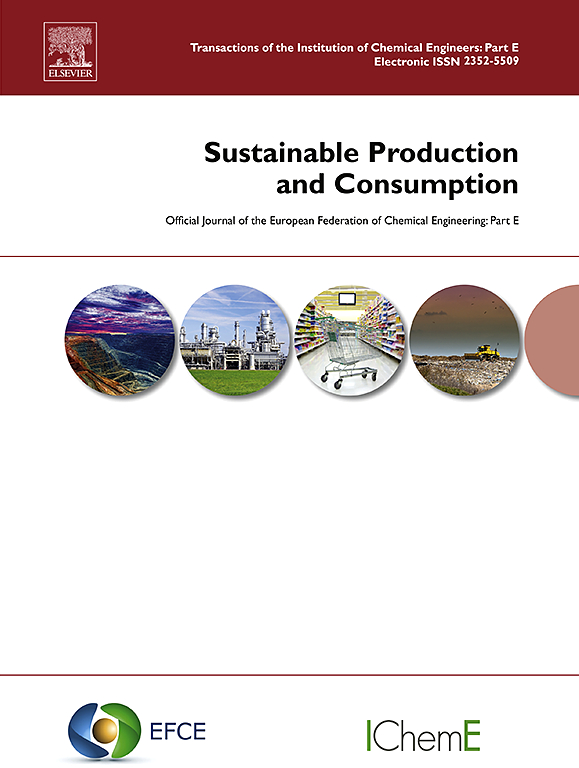升级回收困境的规范与实证解决方案
IF 10.9
1区 环境科学与生态学
Q1 ENVIRONMENTAL STUDIES
引用次数: 0
摘要
在将社会转变为循环经济的压力下,企业越来越需要通过建立共生伙伴关系,将剩余材料升级为新产品。然而,当同一工业共生网络中的不同公司希望为自己主张这种共生和材料升级回收的好处时,就会出现困境。本研究探讨了如何解决这一升级回收困境,并根据不同的生命周期评估准则,即温室气体协议,ISO标准和产品环境足迹,获得了解决方案。首先,对这三个指导方针进行定性评估,以评估它们的规范和经验要素以及它们推动变革的潜力。其次,根据每个准则对三个现实世界的案例进行了量化评估。在每种情况下,来自“供应商”公司的残余材料都由“用户”公司升级回收成新产品。结果表明,指导方针的选择对企业进入产业共生网络的结果和产生的激励有较大的影响。温室气体议定书和产品环境足迹有几个规范要素。虽然理论上应用起来很简单,但它们给解释和歧义留下了空间,而且往往有利于用户公司。ISO标准具有经验因素,导致具体情况不同的结果,需要对所研究的系统有透彻的了解才能有效地应用。当在系统级别执行评估而不是孤立地关注一个或另一个公司时,所有指导方针都显示出改进,即使这种改进的幅度很小。结论是“共享”环境节约的理念是不合理的,因为升级回收只有在共同努力下才能实现,建议对升级回收进行系统评估。本文章由计算机程序翻译,如有差异,请以英文原文为准。
Normative and empirical solutions to the upcycling dilemma
With the pressure to transform our society into a circular economy, companies increasingly need to upcycle residual materials into new products by entering symbiotic partnerships. However, a dilemma arises when different companies in the same industrial symbiosis network desire to claim for themselves the benefits of such symbiosis and of the upcycling of materials. This study investigates how this upcycling dilemma can be solved, and which solution is obtained following different guidelines for Life Cycle Assessment, namely the Greenhouse Gas Protocol, the ISO standards, and the Product Environmental Footprint. Firstly, a qualitative assessment of the three guidelines is performed to evaluate their normative and empirical elements and their potential to drive change. Secondly, a quantitative assessment is performed by modelling three real-world cases according to each guideline. In each case a residual material from a “supplier” company is upcycled into a new product by a “user” company. Results show that the choice of guideline has a large impact on the results and the incentive created to enter the industrial symbiosis network. The Greenhouse Gas Protocol and the Product Environmental Footprint have several normative elements. Although simple to apply in theory, they leave space for interpretation and ambiguity and tend favour the user company. The ISO standards have empirical elements leading to case-dependent results and requiring a thorough understanding of the system under study to be effectively applied. All guidelines show an improvement when the assessment is performed at system level instead of focusing on one or the other company in isolation, even though such improvement is small in magnitude. The conclusion is that the idea of “sharing” environmental savings is unsound, as upcycling is only obtained in a joint effort, and the recommendation is to evaluate upcycling systemically.
求助全文
通过发布文献求助,成功后即可免费获取论文全文。
去求助
来源期刊

Sustainable Production and Consumption
Environmental Science-Environmental Engineering
CiteScore
17.40
自引率
7.40%
发文量
389
审稿时长
13 days
期刊介绍:
Sustainable production and consumption refers to the production and utilization of goods and services in a way that benefits society, is economically viable, and has minimal environmental impact throughout its entire lifespan. Our journal is dedicated to publishing top-notch interdisciplinary research and practical studies in this emerging field. We take a distinctive approach by examining the interplay between technology, consumption patterns, and policy to identify sustainable solutions for both production and consumption systems.
 求助内容:
求助内容: 应助结果提醒方式:
应助结果提醒方式:


